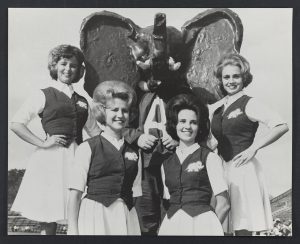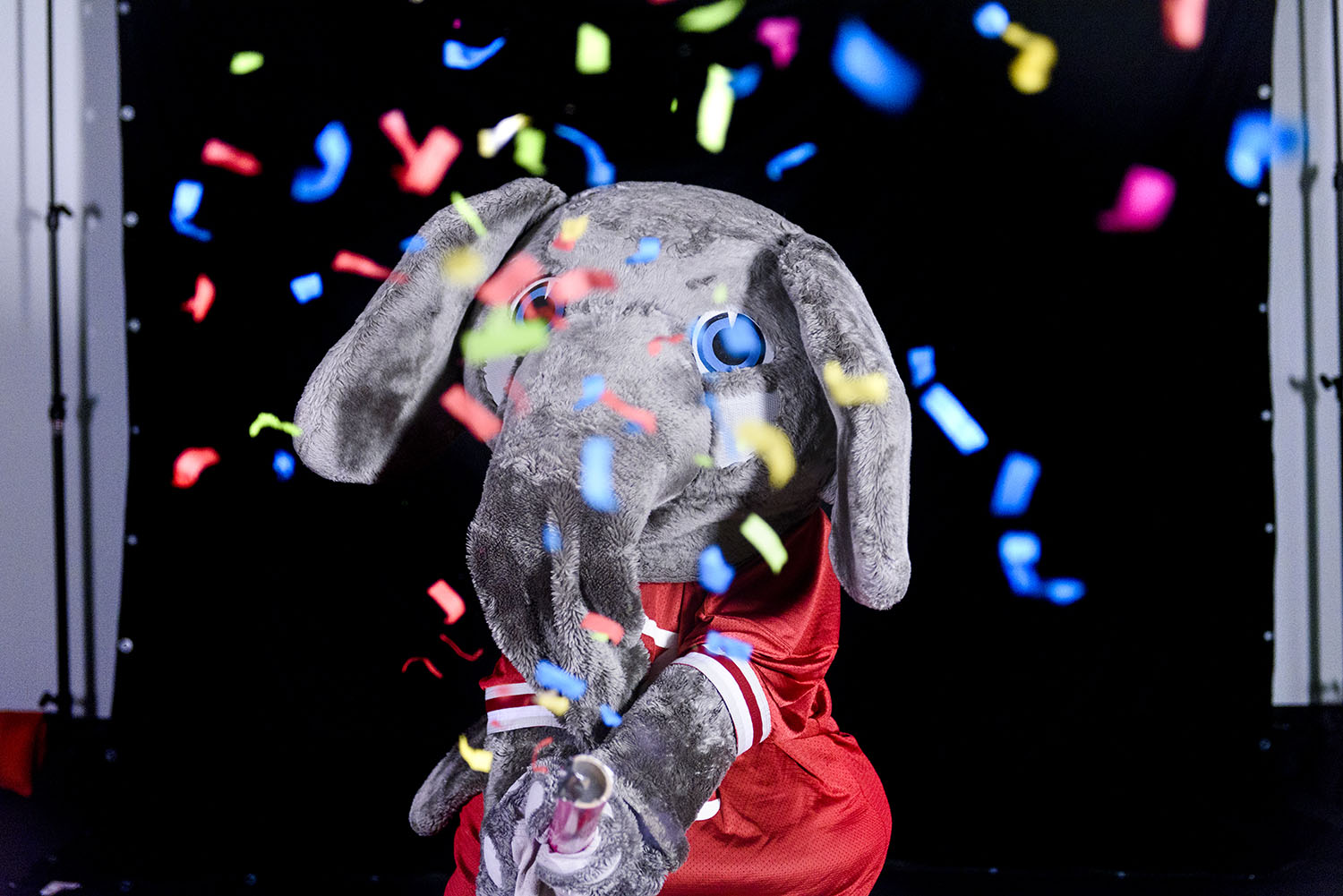By Tory Hyde
There is no doubt that Big Al is a campus icon, but there are a few things you may not know about our beloved mascot.

1. Big Al’s name used to be Alamite.
Big Al has not always been our mascot’s name. In the early 1930s, when the University started associating an elephant with its brand, the elephant was called Alamite.
2. The Big Al costume was first officially worn in 1980.
The elephant became UA’s unofficial mascot in the 1930s. And although elephant costumes appeared at games in the 1960s, it wasn’t until 1979 that the university officially recognized the elephant as its mascot. Big Al made his first official appearance at the 1980 Sugar Bowl when UA played Arkansas.
3. Big Al tryouts are a three-day process.
If you have always wanted to be Big Al, get ready for an intense tryout process. On the first day of tryouts, participants are interviewed, taught how to walk like Big Al and are taught about the character. The second day is more competitive; Big Al hopefuls are judged and then cut. From there, contenders perform a short skit for the judges, who make final cuts. On the third day, candidates who make it to the final cut are judged at the A-Day game. They are evaluated based on their “field walk” and public interaction, and they perform as they would during a regular game day. The judges choose who will wear the Big Al costume right after the A-Day game.
4. Big Al competes in the National Mascot Competition.
For Big Al to be eligible to compete in the Universal Cheerleaders Association National Mascot Championship, he must attend a National Mascot Camp over the summer and create a highlight reel to send in to the competition. The top 10 videos are chosen, and the mascots are invited to compete in the UCA National Mascot Competition at Disney World each January. Five years ago, Big Al placed sixth in the competition.
5. The mascot costume is about 30-40 degrees hotter than the weather outside.
It is no secret that early fall games at Alabama can be hot; imagine wearing a huge insulated costume. When the temperature is in the 70s on game day, that means the temperature in the Big Al costume is at least 100 degrees. The people in the costume have to start hydrating themselves days before the game to prepare for all of the water they will lose while in the costume.
6. Tide for Tusks helps save African elephants.
The African elephant is an endangered species due to poaching. Tide for Tusks is a student organization that works with the Tide for Tusks 501(c)3 elephant conservation group. They work in collaboration with organizations in Africa to preserve the elephants. Not only does Tide for Tusks work to raise money and awareness of the problem, they also use scholarly research to assist the conservation groups in coming up with the best preserve for the African elephant and raise awareness of the endangered species. To learn more, visit Tide for Tusks.
